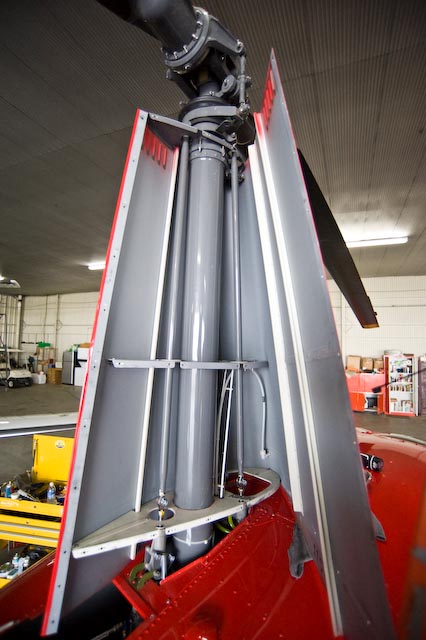

Normally the mast fairing prevents you from seeing much between the transmission and the swashplate. During the 100 hour inspection, one half of the mast fairing is removed, making all the underlying components visible.

In this picture, notice the white flexible plastic hose towards the right side of the picture. That is the pitot tube. The plastic hose transmits the dynamic pressure to the airspeed indicator. Just to the left of that, you can see one of the two forwards control rods - the other forward control rod is behind the mast in this picture. Towards the center of the picture, just to the left of the mast you can see the rear control rod.
Note that at this point in the control system, all three control rods are involved in both collective and cyclic inputs. When the collective pitch is moved, all three control rods move together, sliding the swashplate up and down on the rotor mast. When you move the cyclic, the control rods move differentially, causing the swashplate to tilt.
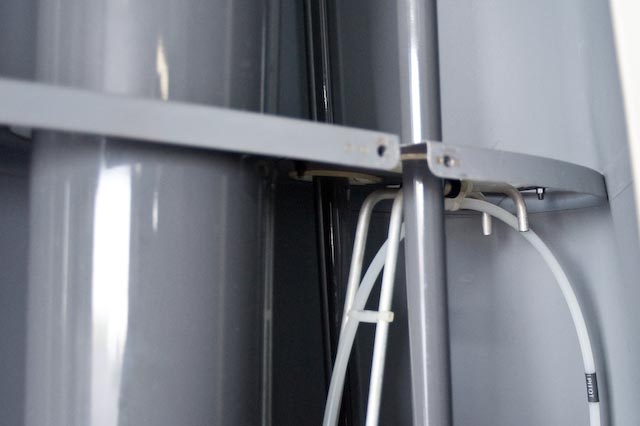
In this closeup, you can see both of the forward control rods, some of the plastic hose for the pitot tube, and two metal tubes that are bent down towards their opening at the end. These are the vents for the fuel tanks. If the fuel tank did not have a vent, or a vent was to become clogged, you would be able to burn a portion of the fuel in the tank, but eventually the tank would form a vaccum which would prevent further fuel from reaching the engine. To prevent this, the R44 has two independent vents, one for each tank. In addition, the POH mentions that the two tanks are vented together, so that even if one vent should become clogged, the tank will be vented from the other tank. You would need to clog both vents before fuel would be prevented from flowing.
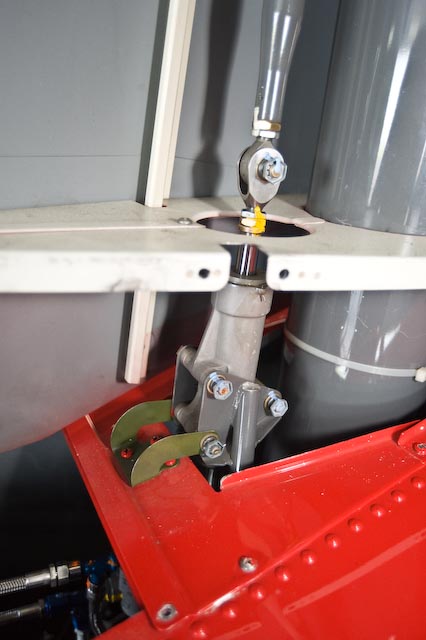
In this picture you can see the detail of the rear control rod. The mechanism you seee in the center of the picture is the hydraulic servo. The R44 Raven 1 & 2 use a system that feels very much like a Bell JetRanger - there is no feedback through the system so you get no feedback from the rotor head through the cyclic or collective. There is a servo on each of the three control rods leading to the swashplate. The tail rotor control is not boosted.
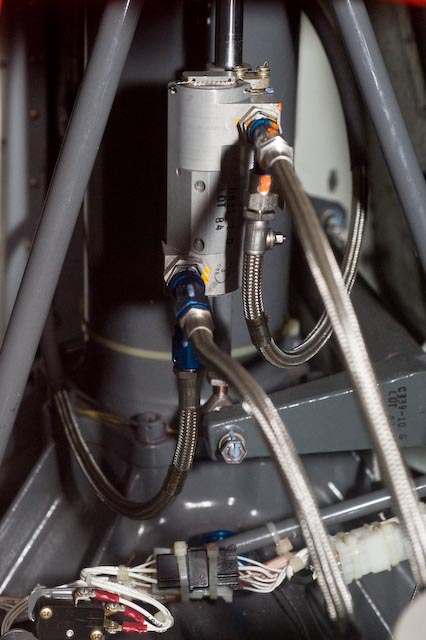
Here we see the bottom of the same hydraulic servo, looking forward from over the upper sheave.

This is the hydraulic reservoir. Hydraulic fluid is stored in here, runs to the pump, through the servos, and then back here again.
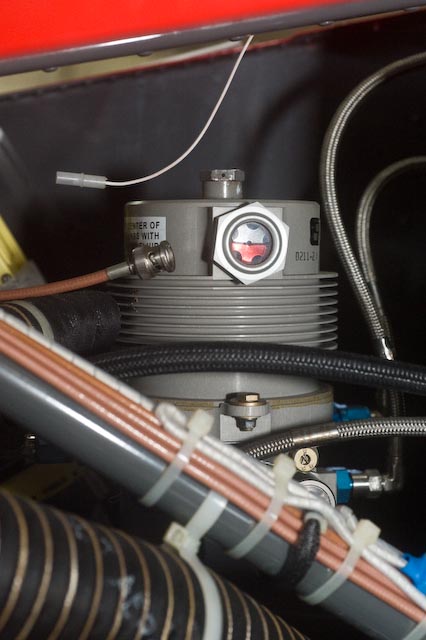
The view we're all used to, looking at the hydraulic reservoir through the cowl door.
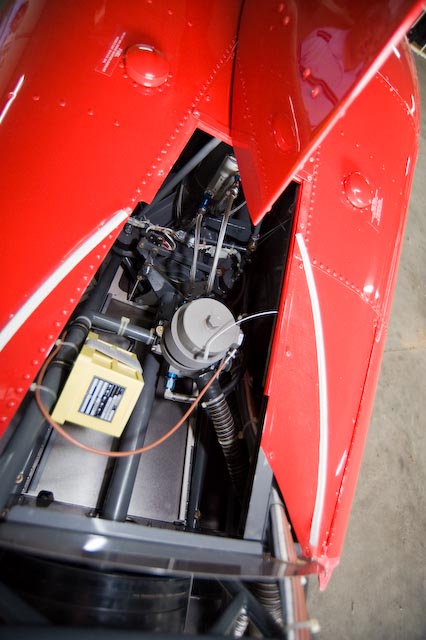
Top view, you can see the hydraulic reservoir. The yellow box to the left and below is the ELT. In front of the reservoir you can see the forward flex coupling, and just beyond that is the rotor brake. You can see the hydraulic lines leading from the resevoir to the rear servo. The black hose attached to the hydraulic resevoir is just some cooling air coming from the main cooling fan.